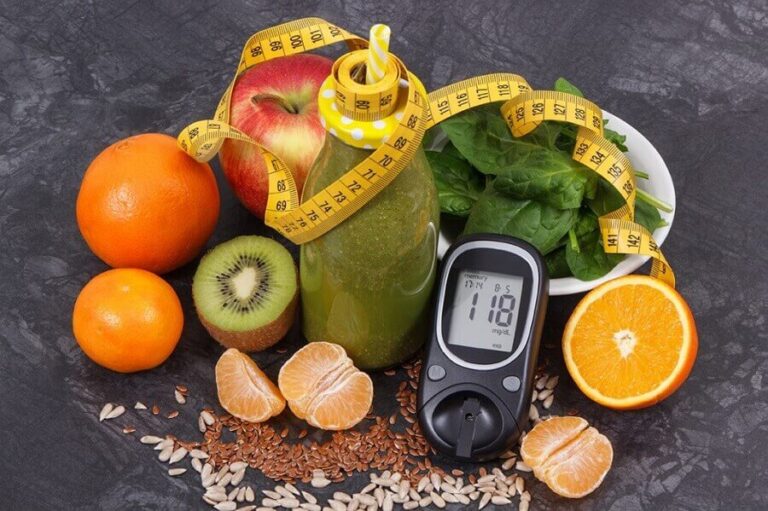Insulin resistance is the first step to type 2 diabetes. When a person becomes resistant to insulin, their body stops processing carbohydrates the way it should.
In the long term, insulin resistance can cause severe consequences in the body. The good news, today, some treatments can delay or even reverse this disease.
This article looks at insulin resistance’s causes, consequences, and symptoms.
What is insulin resistance?
By definition, insulin resistance is a reduction in the sensitivity of the body’s tissues to react to insulin.
The leading cause of this condition is excess sugar and the consumption of other simple carbohydrates inappropriately.
Insulin resistance is directly related to the development of type 2 diabetes.
The main consequences of insulin resistance are the deterioration of the cardiovascular system and more significant risks of heart attack and the brain. This is due to an increase in bad cholesterol and triglyceride levels.
In addition, it is not a rule that is fulfilled in all cases. In general, insulin resistance is usually accompanied by increased body fat. (3)
In men with insulin resistance, testosterone levels can drop considerably. It can lead to imbalances in estrogen levels in women, cause polycystic ovaries, and intensify menopause symptoms.
RELATED:
Insulin resistance – symptoms and diagnosis
One of the symptoms of insulin resistance is a constant feeling of sleepiness and tiredness. In most cases, the frequency of urination increases.
Other common symptoms are hyperpigmentation, papillomas, and peeling in the natural folds of the skin (neck, armpits, groin).
The most accurate diagnosis of insulin resistance is a laboratory test and a doctor’s interpretation. Measuring waist circumference is a simple method to determine a trend; however, this method is not accurate. The symptoms of insulin resistance are:
- Drowsiness after eating
- Constant feeling of tiredness
- Constant feeling of hunger and thirst
- Frequent urination
- Waist circumference greater than hips
- Papillomas Múltiples
Insulin resistance – treatments
Regulating blood sugar levels is the best way to treat insulin resistance.
For this, the most straightforward treatment is diet. In these cases, the maximum limitation of simple carbohydrates (sugar, honey, glucose, and fructose) and a transition to complex carbohydrates (whole grains and vegetables) is recommended.
In addition, it is recommended to accompany exercises to reduce the percentage of body fat. In some cases, it may be necessary to use medications. However, this is a way to minimize the consequences; it does not attack the causes.
Diet for insulin resistant
Healthy fats (olive oil, coconut, and canola) should predominate in a diet for insulin resistance. Low glycemic carbohydrates (quinoa, amaranth, buckwheat, brown rice, vegetables) and high biological value proteins (eggs, dairy, lean meats)
The blood sugar level should be kept above the lower limits. Most fruits are allowed but in moderate amounts. Controlling the glycemic load values is essential to avoid developing chronic insulin resistance.
Food Insulin Index and Resistance
The insulin index is an indicator that measures the amount of insulin produced in response to food consumption.
The insulin index is theoretically used to determine the insulin level in the blood after eating. This information helps prevent resistance.
This theory’s most important practical information is to avoid sugary and high-sugar foods.
While it is similar to the glycemic index theory, this is more complete.
It also suggests avoiding the combination of lactose foods with high protein. Combining milk, yogurts, and ice cream with cheese, eggs, or meats is not a good idea to prevent insulin resistance.
How does insulin work?
Insulin is a pancreatic hormone that regulates blood sugar levels. Insulin is the key to glucose, the body’s primary energy source.
Insulin resistance occurs when glucose amounts are excessive for long periods. In most cases, this happens due to chronic and excessive consumption of foods with simple carbohydrates.
Insulin gets used to high glucose concentrations and stops reacting as it should. Consequently, the pancreas loses its ability to work, and hormonal levels get out of control.
ABSTRACT
Insulin resistance is a condition associated with excess sweet foods.
Its main consequence is the development of type 2 diabetes and the increase of triglycerides and bad cholesterol in the blood.
The most common symptoms are fatigue, an uncontrolled feeling of hunger, and frequent urination.
Insulin resistance must be diagnosed by laboratory analysis. Its most common treatments consist of proper nutrition and increased physical activity.







